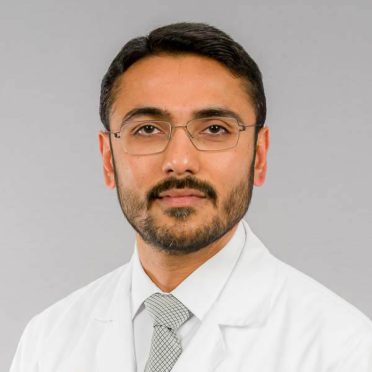Markelle Fultz makes a living – he was the NBA’s No. 1 pick overall in the 2017 draft by the Philadelphia 76ers — by keeping his arms aloft, guarding his team’s basket from the jump shots of opposing players.
Now, that very movement has sidelined him for at least a few months and thrust the medical condition called Thoracic Outlet Syndrome (TOS) into the media spotlight.
“TOS most frequently occurs in relatively young, active and otherwise healthy individuals, particularly those engaged in heavy lifting or repetitive overhead use of their arms,” said Dr. Parth Shah, director of the Thoracic Outlet Center in the Hartford HealthCare Heart & Vascular Institute, the only one of its kind in the state.
TOS, he said, is a condition created by the compression of nerves, arteries or veins in the space between the lower neck and the armpit, known as the Thoracic Outlet. In the case of 20-year-old Fultz, the Sixers reported that specialists identified TOS and recommended physical therapy to hopefully return him to the roster.
Basketball players and other athletes performing repetitive overhead arm movements – swimmers, and tennis, baseball, softball and volleyball players – are at increased risk for the neurogenic type of TOS in which the network of nerves sending signals from the spinal cord to the shoulder, arm and hand are compressed and stop functioning properly.
“It remains a considerable challenge to distinguish NTOS from some common orthopedic and neurological conditions like cervical spine disease, Carpal tunnel syndrome, ulnar nerve compression/injury and rotator cuff/shoulder problems,” he said.
TOS is diagnosed using such tests as:
- Chest X-ray.
- Vascular ultrasound.
- Electromyography (EMG).
- Scalene muscle block.
- Occasionally, other tests like MRI, CT scan or angiography to confirm the diagnosis.
“There are to date no single definitive diagnostic tests that can accurately establish the presence or absence of the neurogenic TOS, however,” Dr. Shah said. “Patients exhibit a wide range in the extent and severity of symptoms, and the functional effects vary considerably from one individual to another.”
Physical therapy is generally the first line of treatment, as is the case for Fultz, Dr. Shah said. Other types of TOS that result in the compression of veins or arteries, however, can require surgery.
“Conservative treatment with physical therapy and pain medication management is the recommended initial management,” he explained. “The evaluation process is vital to the successful treatment as TOS can be very complicated and can present very differently from one person to the next. A personalized treatment approach, therefore, is needed.”
The Hartford Healthcare multidisciplinary approach to TOS – involving providers from the Hartford HealthCare Rehabilitation Network and the Thoracic, Vascular and Neurosurgery and Neurology departments – starts with the diagnosis and continues through medical management, physical therapy and to any needed surgical treatment. The goal, Dr. Shah said, is ensuring patients realize the best possible functional recovery and can return to sports.
For more information on the TOS Center, go to https://hartfordhealthcare.org/services/heart-vascular/departments/thoracic-outlet-center.


